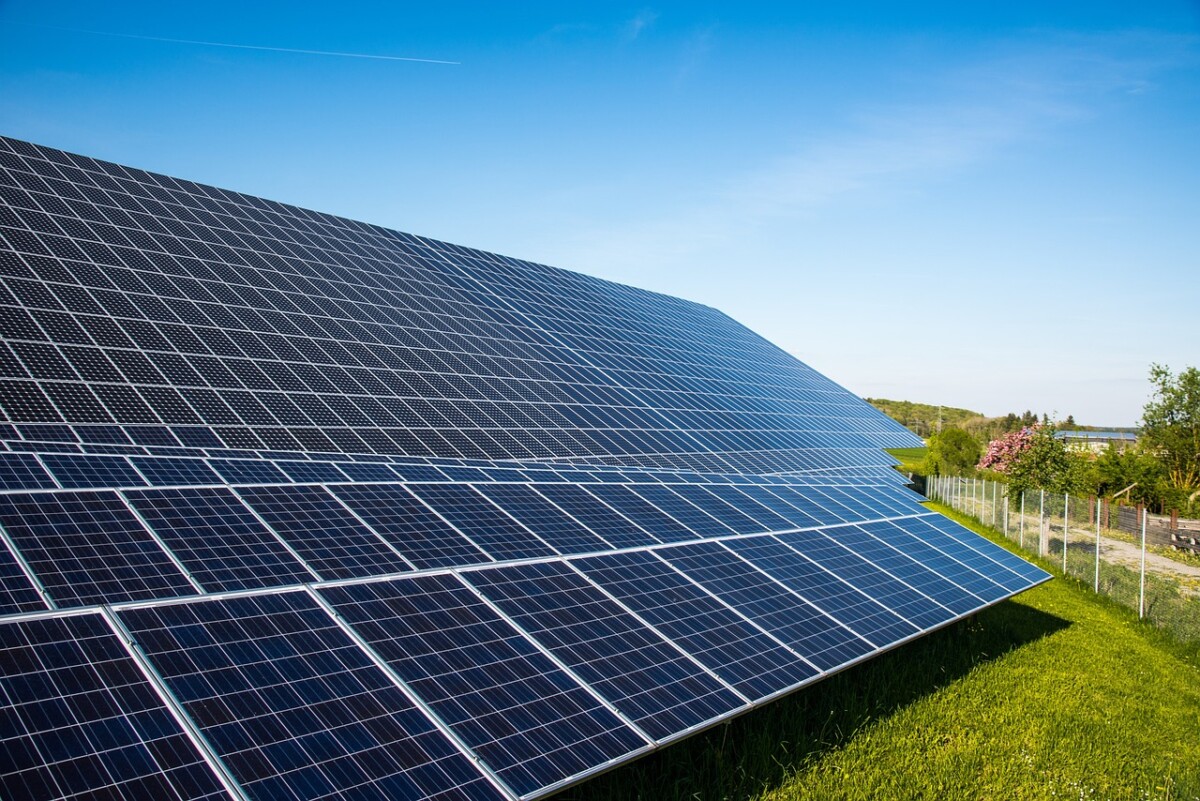The Potential of Solar Energy and Solar Power
In an era where the call for sustainable living grows louder each day, solar energy and solar power stand out as beacons of hope. This clean, renewable energy source taps into the sun’s abundant energy. Offering a way to lessen our dependence on fossil fuels and reduce greenhouse gas emissions. As we delve into the intricacies of solar technologies, it’s essential to understand not only the mechanisms behind converting sunlight into usable energy but also the profound impact it can have on our environment and economy.
Understanding Solar Energy and Solar Power
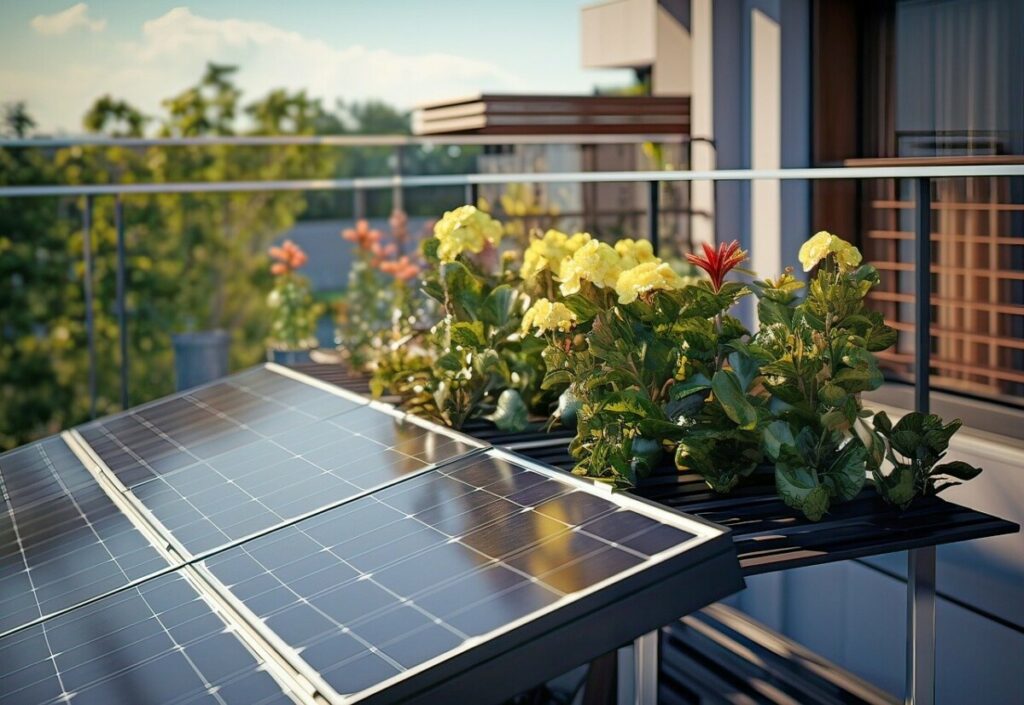
What is Solar Energy?
Firstly, solar energy is derived directly from the sun’s rays. It involves capturing the sun’s energy and transforming it into electrical energy or thermal energy for various uses. This transformation is primarily achieved through solar panels and photovoltaic cells. Which are pivotal components in harnessing and converting solar radiation.
How Solar Power Systems Work
- Capture: Solar panels absorb the sun’s light, primarily using photovoltaic cells.
- Conversion: The photovoltaic effect occurs when photons from sunlight knock electrons loose from atoms within the solar cells, generating a flow of electric current.
- Storage: The direct current (DC) electricity produced can then be stored in batteries for later use or converted into alternating current (AC) for immediate use.
The Impact of Solar Power
Utilizing solar power helps reduce reliance on fossil fuels, lowers costs associated with energy production. And diminishes carbon footprint, making it a cornerstone for sustainable development. Solar energy systems can be installed at various scales. From residential solar energy systems to large solar farms, making them versatile for different energy needs.
The Core Technologies Behind Solar Power
Photovoltaic Cells and Solar Panels
Photovoltaic cells, or PV cells, are the building blocks of solar panels. Which are essential in converting the sun’s light into electrical energy. These cells are made from semiconductor materials, like silicon, which absorb sunlight. The energy absorbed from sunlight is then converted into electric current through the photovoltaic effect. A process first explained by Albert Einstein.
Solar Collectors and Thermal Energy
Besides photovoltaic systems, solar thermal technology uses solar collectors to absorb the sun’s energy to heat water or produce steam. This steam can drive a turbine to generate electricity or provide hot water and space heating for residential and commercial buildings.
Integration into the Power Grid
Solar power systems can feed electricity generated during peak sunlight hours into the grid. Reducing the load on traditional power stations and helping balance the electricity supply throughout the day.
Solar Energy and Solar Power Frequently Asked Questions
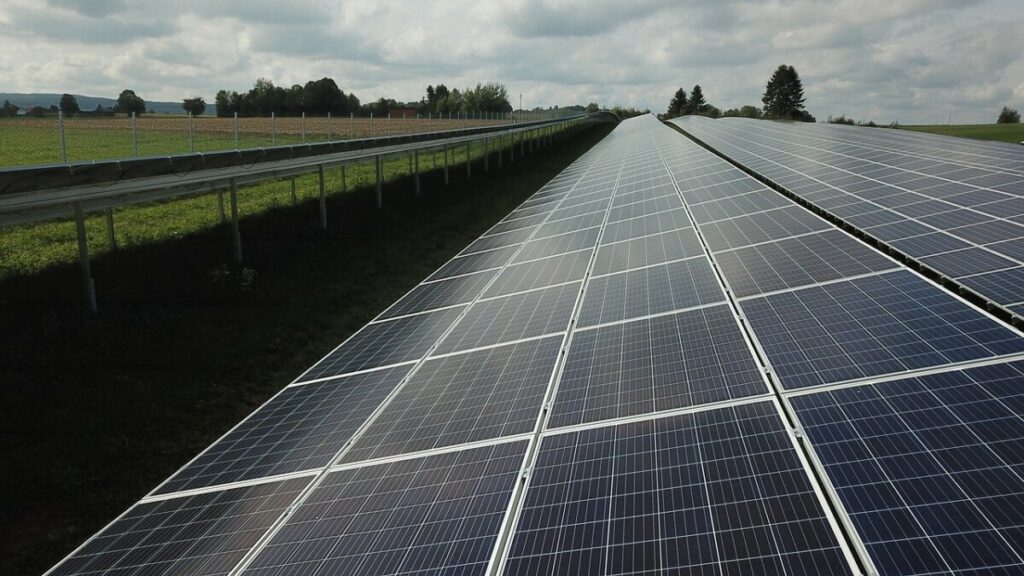
What are the main advantages of solar energy?
The main advantages of solar energy include:
- Renewability: Solar energy is a renewable resource, meaning it won’t run out as long as the sun shines.
- Environmental Impact: It produces little to no greenhouse gases during operation, significantly reducing its carbon footprint compared to fossil fuels.
- Cost-Effectiveness: After initial installation costs, solar power reduces utility bills, and maintenance costs are generally low.
- Energy Independence: Solar energy can reduce dependence on foreign oil and fossil fuels, enhancing energy security.
- Versatility: Solar technology can be deployed virtually anywhere, from small-scale residential settings to large solar farms. And for diverse applications, including electricity production, heating, and desalination.
- Incentives: Many governments offer tax incentives, rebates, and grants to encourage solar energy adoption, making it financially attractive.
Can solar power be used during cloudy days or at night?
Solar power relies on sunlight to generate electricity; however, it can still function under cloudy conditions, albeit at reduced efficiency. Modern solar panels are capable of capturing diffuse sunlight on overcast days. For nighttime use, solar energy must be stored in batteries during the day. Advances in battery storage technology are making this more feasible and efficient, allowing solar power systems to provide electricity 24/7.
What are the environmental impacts of solar energy?
Solar energy is one of the cleanest forms of energy, with minimal direct environmental impacts:
- Reduced Air Pollution: Unlike fossil fuels, solar installations produce no harmful emissions during operation, which can significantly reduce air pollution and improve public health.
- Low Water Use: Solar photovoltaic cells do not require water for electricity generation, which conserves vital water resources compared to traditional power production methods.
- Land Use: While large solar farms require significant land, the impact can be mitigated by integrating solar panels into buildings (BIPV) or using degraded lands. Additionally, the land beneath solar panels can often still be used for agricultural purposes.
- Waste and Lifecycle: The manufacturing and disposal of solar panels involve some environmental challenges, such as the use of toxic materials and waste generation. However, recycling programs and regulations are increasingly addressing these issues.
How does solar power reduce energy costs?
Solar power reduces energy costs in several ways:
- Lower Electricity Bills: Once installed, solar panels generate electricity at a very low marginal cost, since sunlight is free. This reduces electricity bills substantially.
- Net Metering: In many regions, solar power users can sell excess electricity back to the grid, earning credits and further reducing their bills.
- Less Transmission Loss: Generating electricity at or near the point of use diminishes transmission and distribution losses associated with central power plants.
- Stable Energy Prices: Solar power can help stabilize energy prices in the long term by reducing the demand for more volatile-priced energy sources like natural gas and oil.
What are the latest advancements in solar technology?
Recent advancements in solar technology include:
- Perovskite Solar Cells: These promise higher efficiencies and potentially lower manufacturing costs than traditional silicon cells.
- Bifacial Solar Panels: These panels capture sunlight from both sides, increasing energy production without needing additional space.
- Floating Solar Farms: Installing solar panels on bodies of water to reduce land use and water evaporation.
- Solar Skins: Innovative aesthetic solutions that integrate photovoltaic systems seamlessly into the architecture without compromising design.
- Enhanced Energy Storage Solutions: Developments in battery technology, such as solid-state batteries, are improving the efficiency and capacity to store solar energy for use when sunlight is not available.
These innovations are making solar energy more efficient, affordable, and adaptable to a variety of applications, continually expanding its potential as a cornerstone of sustainable energy policy.
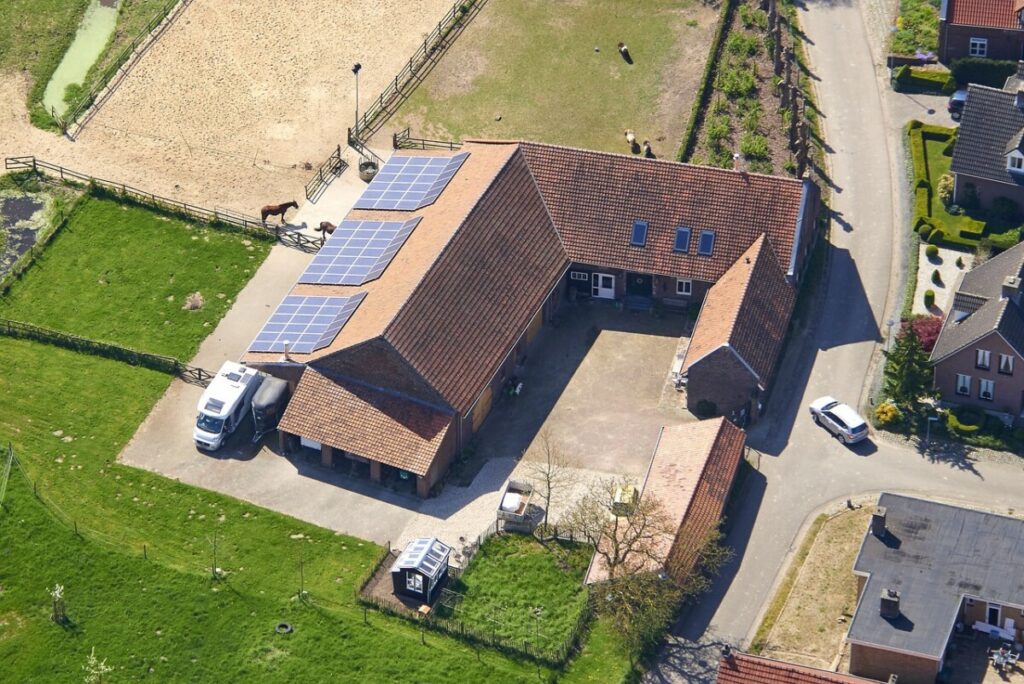
Solar Energy and Solar Power Conclusion
As we explore the strengths of solar energy and solar power, it becomes clear that this renewable resource holds a key to not only powering our homes and businesses but also in driving forward a sustainable energy transition. With advancements in solar technology and increasing awareness of environmental needs, solar energy continues to be one of the most promising and vital energy resources for the future.
The Economic and Environmental Impact of Solar Energy
Solar energy is not just a technological innovation; it’s a catalyst for economic and environmental change. Understanding its impact can help stakeholders make informed decisions about investments in renewable resources.
Economic Benefits of Solar Power
Cost Reductions in Electricity Production
Solar power offers significant advantages in reducing electricity costs. Over the past decade, the cost of installing solar systems has plummeted, thanks in part to technological advancements and increased market competition. According to the National Renewable Energy Laboratory, the average price of solar photovoltaic panels has decreased by more than 70% since 2010. This reduction makes solar energy an increasingly affordable option compared to traditional energy sources such as natural gas and coal.
Job Creation and Economic Growth
The solar industry has been a major driver of job creation in the United States. Installing, maintaining, and manufacturing solar systems require a significant workforce, contributing to local and national economic growth. As more states and countries adopt solar energy, the industry is expected to generate a wide variety of jobs, from high-tech positions in engineering to manufacturing roles in solar panel production facilities.
Stabilization of Energy Prices
Solar power contributes to the stabilization of energy prices by reducing the dependency on imported fuels, which are often subject to volatile markets. By investing in solar energy systems, countries can protect themselves against unpredictable changes in fuel costs and ensure a more stable energy supply.
Solar Energy and Solar Power
Environmental Benefits of Solar Power

Reduction in Greenhouse Gas Emissions
One of the most significant environmental benefits of solar energy is the reduction of greenhouse gases. Traditional electricity generation from fossil fuels produces large amounts of carbon dioxide and other pollutants. In contrast, solar energy produces minimal greenhouse gas emissions once the panels are manufactured and installed. This shift from fossil fuels to solar power could significantly reduce global carbon emissions, aiding in the fight against climate change.
Decreased Water Usage
Solar photovoltaic systems do not require water for generating electricity, which is a major advantage over nuclear and coal-fired power plants. These conventional energy sources require significant amounts of water for cooling, posing a strain on local water resources. Solar energy offers a sustainable alternative that conserves water and reduces the environmental impact associated with water use in energy production.
Reduction in Hazardous Waste
Unlike conventional power plants that may produce hazardous waste as a byproduct of energy generation, solar power systems do not emit toxic materials during operation. The environmental footprint of solar panels is primarily associated with the manufacturing process, but ongoing efforts to improve recycling technologies for solar panels could further mitigate this impact.
Solar Energy and Solar Power
Solar Power’s Role in Sustainable Urban Development
Firstly, solar energy is particularly advantageous for urban areas, where energy consumption is high and space is often limited. Solar panels can be installed on rooftops, in parking areas, or integrated into building designs as photovoltaic windows. This flexibility allows cities to maximize their space usage while significantly reducing their reliance on grid-supplied electricity.
Urban solar projects also contribute to reduced urban heat island effect, as solar panels absorb less heat compared to traditional roofing materials. This not only helps in lowering city temperatures but also reduces the energy used for cooling buildings during hot weather.
Solar Energy and Solar Power Frequently Asked Questions

How reliable is solar energy compared to traditional energy sources?
Solar energy is increasingly reliable with advancements in technology and grid integration. However, its reliability varies based on geographic location and weather conditions. Unlike traditional energy sources such as coal, gas, or nuclear, which can provide continuous power, solar energy is intermittent, relying on sunlight availability. This challenge is mitigated by developments in energy storage systems like batteries, which store excess power during peak sunlight and supply power during periods without sunlight, including night and cloudy days. With proper infrastructure and management, solar energy can be a highly reliable component of a diversified energy portfolio.
What government incentives are available to encourage solar energy adoption?
Government incentives for solar energy adoption vary by country and region but commonly include:
- Tax Credits: Reductions in tax liability for individuals or businesses that install solar PV systems.
- Rebates: Cashback on the purchase of solar systems to lower upfront costs.
- Feed-in Tariffs: Payments to solar energy producers for the electricity they feed back into the grid, often at above-market rates.
- Net Metering: Allows solar system owners to sell excess power back to the grid, effectively reducing their electricity bills.
- Subsidized Loans: Low-interest or zero-interest loans to make solar installations more affordable.
- Grants: Direct financial support for solar projects, especially in non-profit or community-based settings. These incentives help make solar energy financially attractive and competitive with conventional power sources.
Are there environmental concerns associated with solar panel disposal?
Yes, there are environmental concerns associated with the disposal of solar panels. Solar panels contain materials that can be harmful if not disposed of properly, such as heavy metals like lead and cadmium, and some use silicon cells that can include toxic chemicals. However, the solar industry is increasingly focusing on recycling old panels to mitigate these concerns. Efforts are underway to improve the recyclability of solar panels and to develop more eco-friendly materials for their production. Proper recycling helps recover valuable materials and reduces the environmental impact.
How can residential properties be assessed for solar power suitability?
Assessing a residential property for solar power suitability typically involves several factors:
- Sunlight Exposure: Evaluating the amount of daily and seasonal sunlight the property receives, considering potential shading from trees or other structures.
- Roof Condition and Orientation: The roof should be in good condition and ideally face south in the Northern Hemisphere (north in the Southern Hemisphere) to maximize sunlight exposure.
- Local Climate: Areas with higher sunlight hours per year generally yield better solar energy output.
- Energy Needs: Estimating the household’s energy consumption to determine the size of the system required.
- Local Regulations and Grid Infrastructure: Understanding local building codes, grid access, and potential incentives. Professional solar assessors use tools like photovoltaic software to simulate potential solar production and offer a detailed analysis for homeowners considering solar installations.
What role does technology play in the future of solar energy?
Technology plays a pivotal role in the future of solar energy, driving improvements in efficiency, cost-effectiveness, and integration with existing power systems. Innovations like high-efficiency photovoltaic cells, solar batteries, smart grids, and AI for energy management are crucial. Technological advancements also focus on improving the manufacturability and recyclability of solar panels and developing integrated solutions like solar roofing tiles and windows. As technology evolves, solar energy is expected to become more accessible, more integrated into our buildings and vehicles, and a larger part of the global strategy to combat climate change.
Solar Energy and Solar Power

Technological Innovations and Advancements in Solar Energy
As the demand for renewable energy sources grows, technological advancements in solar energy continue to enhance its efficiency and accessibility. These innovations are crucial in overcoming some of the traditional limitations associated with solar power, such as efficiency rates and storage capabilities.
Key Technological Advances in Solar Energy
High-Efficiency Photovoltaic Cells
Recent developments in photovoltaic (PV) technology have led to the creation of high-efficiency solar cells. Researchers at the National Laboratory of the U.S. Department of Energy have pioneered solar cells that convert more than 22% of sunlight into usable energy, a significant improvement over the average 15-18% efficiency rate of traditional solar panels. These high-efficiency cells use advanced materials such as perovskites and multi-junction cells that can absorb more of the sun’s spectrum.
Enhanced Solar Storage Solutions
Effective energy storage is vital for the practical use of solar power, as it allows the energy captured during sunny periods to be used at night or during cloudy days. Innovations in battery technology, such as lithium-ion and flow batteries, have significantly improved in terms of capacity and lifespan. These advancements make it feasible to store solar energy more efficiently, enhancing the reliability and stability of solar power systems.
Solar Tracking Systems
Solar tracking systems enhance the amount of electricity generated by solar panels by adjusting their position to follow the sun’s trajectory throughout the day. This technology can increase the energy output of solar panels by up to 25% compared to stationary installations. The integration of smart sensors and IoT technology into these systems allows for real-time adjustments and monitoring, further optimizing solar energy production.
Building-Integrated Photovoltaics (BIPV)
Building-integrated photovoltaics represent a significant shift in solar technology, where solar panels are incorporated directly into building materials, such as windows, roofs, or facades. BIPV not only serves as a structural component of the building but also generates electricity, contributing to the building’s energy needs without requiring additional space. This approach is particularly appealing for urban environments where space is at a premium.
Solar Energy and Solar Power
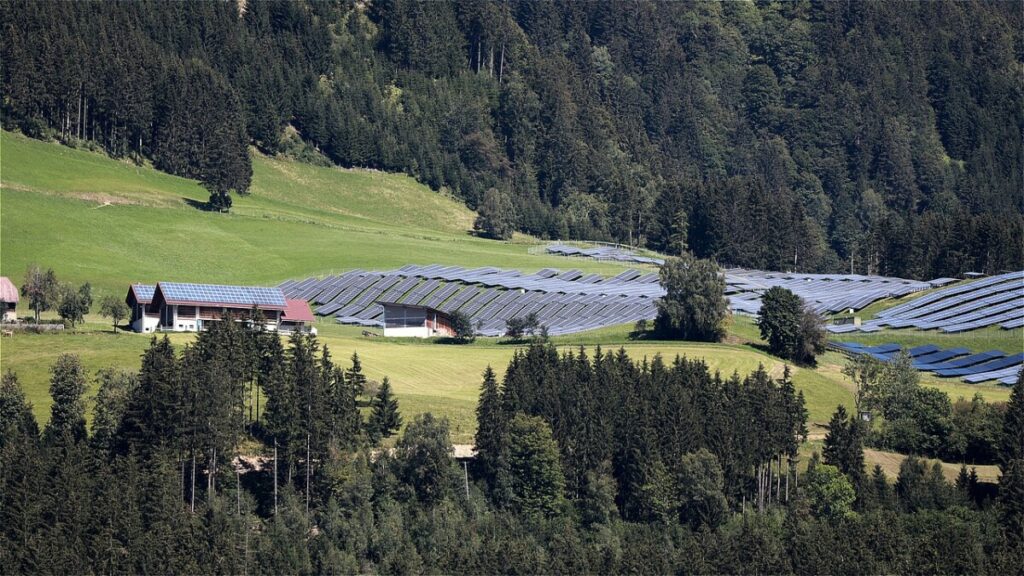
The Impact of Solar Technology on Global Energy Markets
The rapid advancement of solar technology has a profound impact on global energy markets. As solar energy becomes more cost-effective and efficient, it poses a competitive threat to traditional energy sources like coal and natural gas. This shift not only influences energy prices but also drives policy changes and investment in renewable energy around the world.
Countries with rich solar resources, such as those in the Middle East and North Africa, are increasingly investing in large-scale solar projects to capitalize on this abundant resource. Similarly, nations with less sunlight are also finding value in solar energy due to the improved efficiency and reduced costs of solar installations.
Solar Energy and Solar Power Frequently Asked Questions
What are the newest technologies in solar energy?
Some of the latest innovations in solar energy include:
- Perovskite Solar Cells: These promise higher efficiencies potentially at lower costs compared to traditional silicon-based cells. They have reached efficiencies above 25% in the lab.
- Tandem Solar Cells: Combining two different layers of photovoltaic materials, such as perovskite on top of silicon, to capture more of the solar spectrum and increase overall efficiency.
- Floating Solar Panels: Installed on bodies of water, these not only conserve land but also reduce water evaporation and keep the panels cool, improving efficiency.
- Solar Fabric: Integrating photovoltaic cells into fabric to create clothing or awnings that generate power.
- Transparent Solar Panels: These can be used as windows or integrated into the facades of buildings, generating power while letting light pass through.
How do solar tracking systems work?
Solar tracking systems automatically move solar panels throughout the day to align with the sun’s position, maximizing the solar energy that the panels can capture. There are two main types:
- Single-Axis Trackers: Rotate on one axis, generally following the sun from east to west.
- Dual-Axis Trackers: Rotate on two axes, adjusting both east-west and north-south, which allows them to capture more sunlight as the sun’s elevation changes with the seasons. These systems use motors and GPS or sensor-based guidance to adjust the panels’ position, significantly increasing energy output compared to fixed panels.
What are the challenges of integrating solar power into existing power grids?
Integrating solar power into existing grids presents several challenges:
- Intermittency: Solar power varies with the time of day and weather conditions, which can lead to fluctuations in power generation and challenges in maintaining the stability of the grid.
- Infrastructure: Existing grids were designed for centralized power sources rather than distributed generation sources like solar panels. Upgrading infrastructure to handle multiple, variable input sources is necessary but costly.
- Storage: To manage the intermittency, significant advancements in storage solutions are required to store excess power generated during peak sunlight for use during low light conditions.
- Regulatory and Market Structures: Grid regulations and market structures may need updating to accommodate a higher share of renewable energy sources.
Can solar power meet the energy needs of large industrial operations?
Yes, solar power can meet the energy needs of large industrial operations, especially when integrated with other renewable sources and energy storage systems to ensure a consistent power supply. Many industries are turning to solar to reduce their carbon footprint and energy costs. However, the feasibility depends on the industry’s energy demands, location, available space for installations, and local solar irradiance levels.
What advancements are expected in the future of solar technology?
Future advancements in solar technology are likely to focus on:
- Increased Efficiency: Ongoing research aims to push the boundaries of photovoltaic efficiency closer to their theoretical limits.
- Improved Storage Solutions: Better battery technologies that offer higher capacities, faster charging times, and longer lifespans.
- Integration with Building Materials: Developing solar cells that can be seamlessly integrated into building materials. Making solar power a standard part of new construction.
- Smart Grid Technology: Advances in grid management technology to better handle the variable input from renewable sources like solar.
- Recycling Technologies: Enhanced methods for recycling old solar panels to recover valuable materials and reduce landfill waste.
These advancements will help make solar energy even more viable and crucial in meeting global energy needs sustainably.
The technological strides in solar energy not only promise a brighter future for global energy systems but also align closely with the goals of sustainability and economic resilience.
Solar Energy and Solar Power: Embracing a Sustainable Future
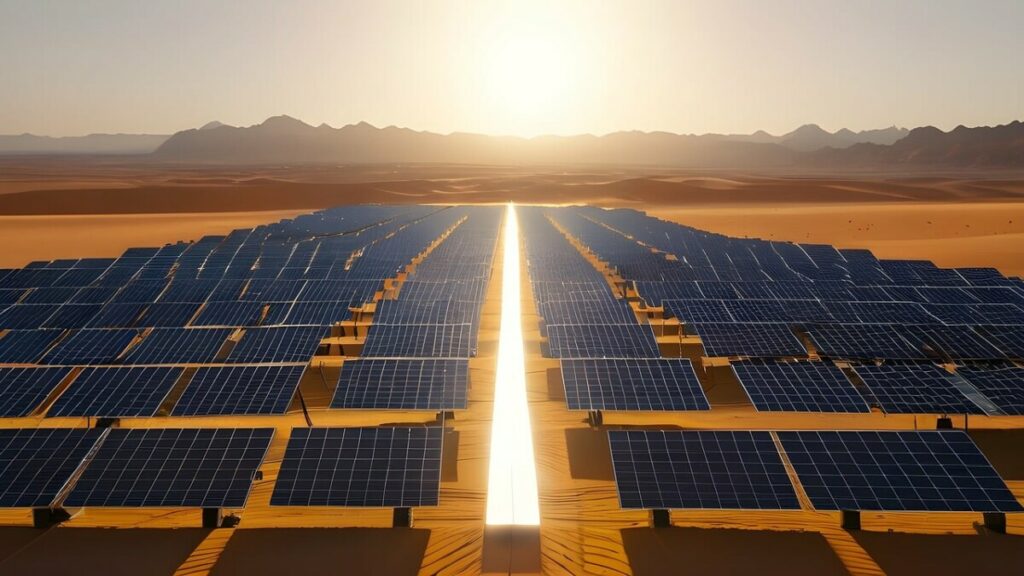
The transition towards renewable energy sources like solar energy is pivotal for achieving sustainability and resilience in our energy systems. As we have explored the economic, environmental, and technological facets of solar power, it becomes evident that solar energy is not merely an alternative but a necessity for the future of energy.
Global Trends and the Future of Solar Energy
Increasing Global Adoption
Countries around the world are rapidly increasing their solar energy capacity as part of their efforts to combat climate change and reduce dependence on fossil fuels. For instance, solar power now accounts for a substantial portion of new electricity generation capacity added globally each year. This trend is driven by both governmental policies favoring renewable energy and the decreasing cost of solar technology.
The Role of Government and Policy
Effective policy frameworks are critical in promoting the adoption of solar energy. Governments can accelerate solar power adoption through incentives such as tax breaks, subsidies, and grants. Moreover, policies that require or encourage the use of renewable energy for public buildings and services can significantly boost the market for solar technology.
Solar Power and Community Energy Systems
Community solar projects allow multiple individuals to benefit from a single, large-scale solar array. Which can be installed on a communal land area or through shared infrastructure like schools or municipal buildings. This approach democratizes access to solar energy. Allowing people who may not have suitable roof space or the financial means for individual systems to still benefit from solar power.
The Challenge of Energy Equity
While solar energy presents many benefits, it also poses challenges in terms of energy equity. Ensuring that all communities, especially underprivileged ones, have access to the benefits of solar power is crucial. This includes addressing upfront costs, providing financing solutions, and supporting community-based projects that bring solar energy to low-income households.
Solar Energy and Solar Power Frequently Asked Questions

How does solar power contribute to reducing global warming?
Solar power contributes significantly to reducing global warming by decreasing reliance on fossil fuels. Which are major sources of carbon dioxide and other greenhouse gases. Solar panels produce electricity without emitting carbon during operation, which directly reduces the amount of carbon released into the atmosphere. By integrating solar energy into the power grid, countries can lower their carbon emissions, slow the rate of global warming, and meet international climate goals.
What can individuals do to support the adoption of solar energy?
Individuals can support the adoption of solar energy in several ways:
- Install Solar Panels: Consider installing solar panels on your home or property to reduce reliance on grid electricity. And decrease your carbon footprint.
- Participate in Community Solar Projects: If individual panels aren’t an option due to cost or location, joining a community solar project can be a viable alternative.
- Advocate and Educate: Raise awareness about the benefits of solar energy among friends, family, and community members. Support policies and leaders that promote renewable energy initiatives.
- Invest in Solar Energy: Support the industry by investing in solar companies or community projects that advance the deployment of solar technology.
- Use Solar Products: Adopt smaller-scale solar technologies like solar water heaters, solar chargers, and solar lighting in your everyday life.
How do solar incentives vary by country?
Solar incentives vary widely by country and can include tax breaks, rebates, feed-in tariffs, net metering, and grants. For example:
- United States: Offers a federal solar tax credit. Which allows taxpayers to deduct a portion of the cost of installing solar panels.
- Germany: Known for its “Energiewende” policy, Germany provides feed-in tariffs that guarantee fixed, above-market rates for the solar power generated by individuals.
- China: Offers subsidies and incentives for both manufacturers of solar panels and consumers. Along with supporting infrastructure development for large-scale solar farms.
- India: Implements subsidy schemes and a favorable net metering policy to encourage residential and commercial solar installations. These incentives help make solar energy more affordable and attractive to consumers and businesses.
What is the potential of solar energy to become the world’s primary energy source?
Solar energy has enormous potential to become the world’s primary energy source due to its ubiquity and abundance. It is estimated that the sunlight received by the Earth in one hour could meet the global energy needs for an entire year if fully harnessed. With continuous advancements in solar technology, improving efficiency, and reducing costs, coupled with growing governmental support and public demand for cleaner energy sources, solar energy could feasibly become a dominant source of power worldwide, particularly as storage solutions evolve to manage its intermittency effectively.
How are newer technologies making solar power more accessible to the general public?
Newer technologies are making solar power more accessible through various innovations:
- Cost Reductions: Advances in manufacturing and increased competition have significantly lowered the cost of solar panels and related components.
- Improved Efficiency: New materials like perovskite are creating higher efficiency rates in solar panels. Which generate more power per square meter.
- Enhanced Storage Solutions: Better batteries are making solar power a more reliable source of energy. Capable of providing electricity even when the sun isn’t shining.
- Building-Integrated Photovoltaics (BIPV): These technologies integrate photovoltaics directly into building materials, such as windows or roof shingles. Making installation and aesthetics more appealing.
- Portable and User-Friendly Solar Devices: Innovations in portable solar devices, including chargers and solar-powered household items, bring solar technology directly to consumers in user-friendly formats. These advancements are key to increasing the accessibility and practicality of solar energy. Enabling more people to participate in the renewable energy revolution.
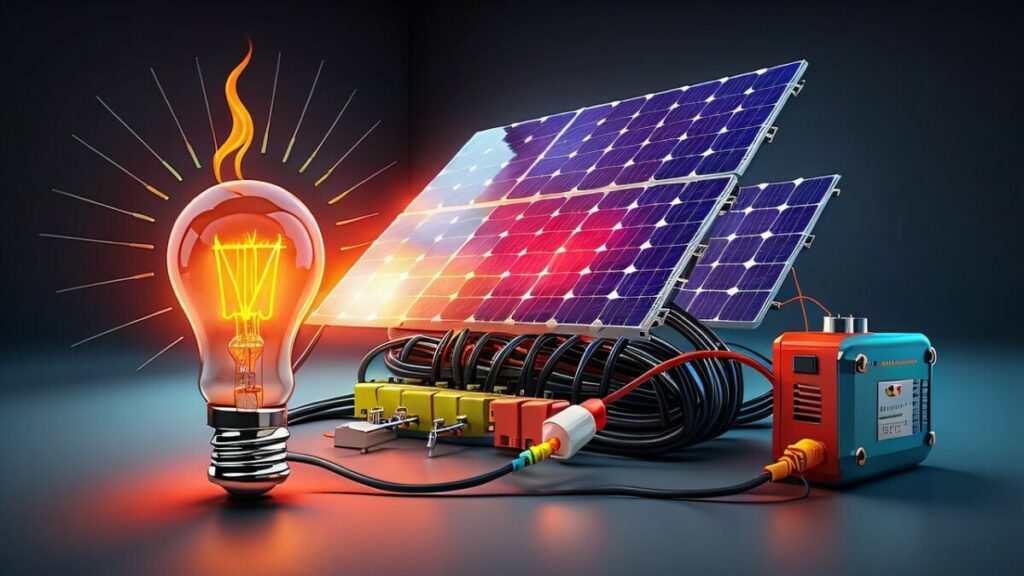
Solar Energy and Solar Power Conclusion: The Path Forward with Solar Energy
As we stand on the brink of a renewable energy revolution, solar energy and solar power are at the forefront of transforming our world. By harnessing the most abundant energy resource available—the sun—we can not only meet our current energy needs but also secure a sustainable and prosperous future for coming generations.
The journey towards a solar-powered world involves continuous advancements in technology, supportive policies, and an unwavering commitment from both public and private sectors. It requires understanding, embracing, and promoting the use of solar energy across all facets of society. With every solar panel installed, from sprawling solar farms to rooftop installations, we step closer to a cleaner, more sustainable world.
Solar Energy and Solar Power
Solar energy is no longer just an option; it is an imperative for environmental sustainability and economic stability. The ongoing developments and increasing accessibility of solar technologies promise a brighter, greener future. Making it clear that solar power is not just about generating electricity—it’s about empowering global change.
As we conclude this exploration of solar energy and solar power, remember that every small step towards adopting solar technology contributes to a larger impact on our planet’s health and our future energy security. Let’s continue to strive for innovation and embrace the potential of solar power to illuminate the path to sustainability. By sharing this article “Solar Energy and Solar Power” you will help others contribute to a greener planet. Thank you.
Recent Posts
Understanding Energy and Electricity: The Power For Progress
Energy and Electricity Energy and electricity are integral components of modern life, powering everything from homes and businesses to transportation and communication. Without them, the...
The Future of Wind Energy The future of wind energy is set to play a critical role in addressing global energy needs while combating climate change. As renewable energy sources like wind and...


